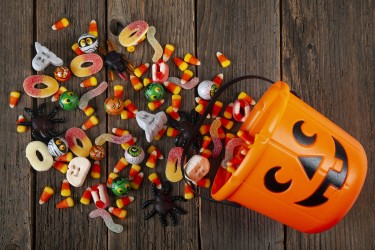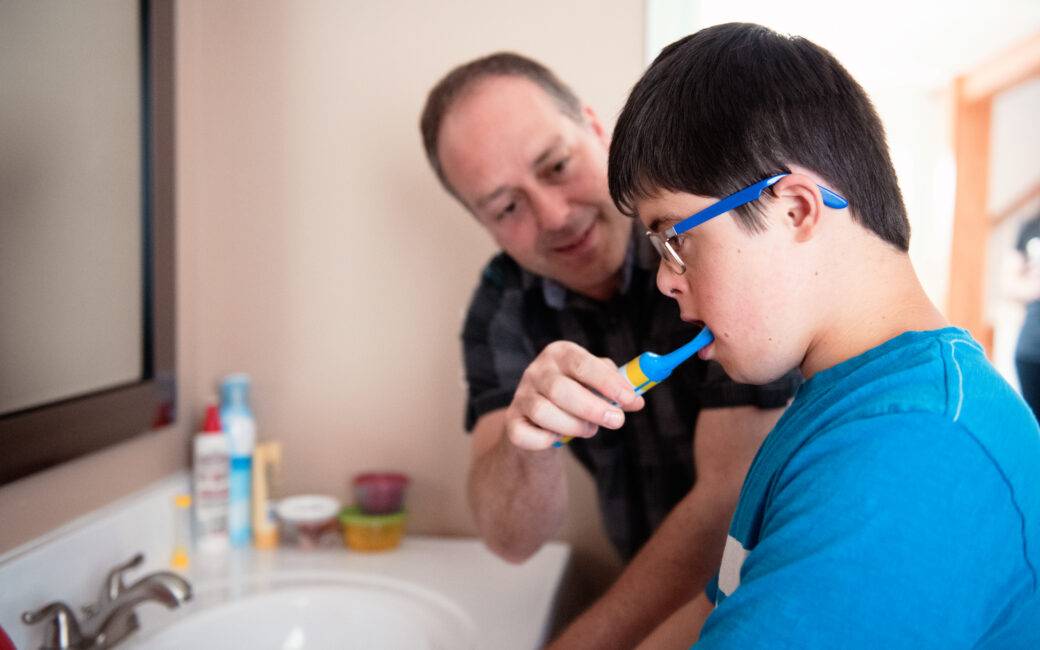It’s the most wonderful time of the year, especially for candy-loving kids. On Halloween, they will fill their trick-or-treat bags with all kinds of confections. Then comes the holiday season, when sweets are often front and center. This sugary and sticky goodness can eventually take a toll on your child’s developing teeth. Nobody wants to be a Grinch, but knowing how to minimize the adverse effects and still allow kids to indulge is essential.
First, here is some yucky news about the sweet stuff.
The Good, the Bad, and the Sticky
Studies have shown that by the end of Halloween night, kids will have consumed about three cups of sugar while working their way through their haul. To put that into perspective, children should only have about six teaspoons of added sugar daily. Think of sugar as the kryptonite of teeth. It creates acid, which eats away tooth enamel and may eventually cause cavities.
Kids also love to eat anything sticky and gooey, like caramels, taffy, Sour Patch Kids, licorice, and gum. As tasty and fun as these candies are, they tend to stick to the teeth, forcing the sugar to stay on the enamel even longer. It can be hard to brush them off; the longer they sit on the tooth, the more damage can occur.
“Hard candy is the worst offender,” said Dr. Dorothy Baker of Summerville Pediatric Dentistry & Orthodontics. “It stays in your mouth for a long time and can also break your teeth.”
Sweets in Moderation
But there is good news: You don’t have to ban the treats. Instead, Baker said that incorporating a sweet into a meal neutralizes the effects of the sugar. “If you are going to eat sugar, it’s better to do it at the same time as a balanced meal,” said Baker. “Rather than serving dessert last, incorporate it into your holiday meal. Healthy foods help neutralize the acids in sugar, and they also displace sugar from your teeth.”
Some candies your child may eat are better for their teeth than others. “Unless your child is allergic, stick with plain chocolate such as Hershey Kisses or even peanut butter cups,” said Baker. “Chocolate doesn’t stick to the teeth as much as, say, caramels do and can be easily brushed away. If your child likes dark chocolate, it’s even better. Dark chocolate has less sugar than milk chocolate.”
Choosing softer treats is even more important if your child is wearing braces. “Take a good look at their trick-or-treat bags and remove sticky candies such as gummy worms, jellybeans, Skittles, Mike & Ikes, Tootsie Rolls, and Swedish Fish,” said Baker. “These types of candies can pull off the brackets and force a visit to fix them.”
Since there are no guarantees that trick-or-treating will result in your child receiving candies they are allowed to eat, consider stocking up on safe candies. “Then let your child swap out the ones they can’t have for the ones they can,” said Baker.
Once the night is done and the children have indulged in a few small treats, divvy up the rest for the upcoming days. “Make sure you keep on top of good brushing habits to prevent any damage the candy can cause,” said Baker. “Have them brush their teeth immediately after eating candy. It takes about 20 minutes before the corrosive acids are released onto the teeth.”
Building good habits
Now that the candy is in the house, your children will regularly ask if they can have more. “Make a conscious effort to balance their diet with healthy snacks and lots of water,” said Baker.
Most importantly, do not leave the big bowl of treats on the dining room table where they can grab something whenever they want. “Ration out their treats so they last awhile,” said Baker.
The next few months are filled with fun and many sweets. Start to set a positive routine now to protect your children’s teeth. They can still have sweets, and you can rest assured that you’re doing the best for your child’s dental health.
Contact Summerville Pediatric Dentistry at (843) 821-6433 for more information or to make an appointment at one of our convenient locations.


